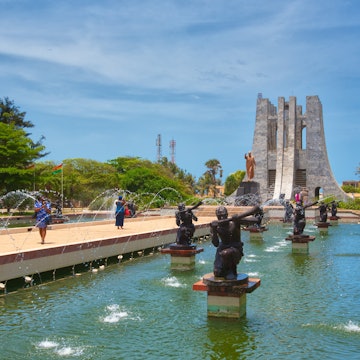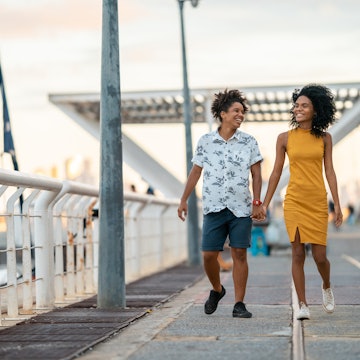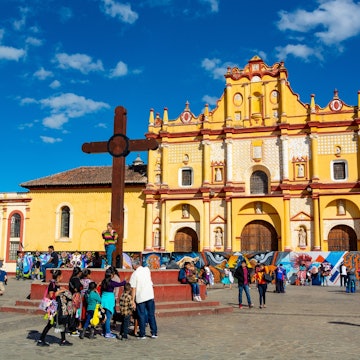

Busua Beach, Ghana. Omri Eliyahu/Shutterstock
With a wealth of sandy beaches and national parks teeming with wildlife, Ghana is a small country with loads to offer adventurous travelers.
Not only is Ghana relatively easy to navigate, but the country boasts a stable democracy, welcoming residents and an array of unique attractions, from incredible festivals to the studios of artisan coffin makers (yes, really). Whether you’re a first-timer to West Africa or you're coming back for more, you’ll always find something here to delight and excite you.
After you’ve read up on all you need to know before you go, consider our picks for the best things to do on your trip to Ghana.

1. Track elephants in Mole National Park
Mole National Park is Ghana’s largest protected area and the jewel of Ghana’s national parks. At 4840 sq km (1869 sq miles), this stunning landscape of open savanna and small pockets of floodplain grasslands is bigger in area than greater Accra, the country’s capital. More than 90 wildlife species call Mole home, including warthogs, green monkeys and 600 of some of the most docile elephants on the continent.
Planning tip: While predators such as leopards and spotted hyenas are also found in Mole, lions are rare. This relative lack of killer cats combined with Mole’s less-aggressive elephants makes the park ideal for walking safaris. In the company of an armed ranger, you can track a herd of elephants on foot, following them through the bush to the banks of watering holes for an up-close and unforgettable view.

2. Browse custom fantasy coffins
Custom-made burial vessels that are shaped like symbols from a person’s profession or passion (think an airplane for pilots or pencil for writers), Ghana’s fantasy coffins first caught on in the mid-20th century before becoming known to a broader global audience during a Paris art show in 1989.
These coffins are a way for the deceased to express their passions even in death. A bespoke coffin might resemble a fish, a sneaker, a camera, even a beer bottle: if Ghana’s artisan coffin carpenters can make it, they will. Each coffin is exquisitely detailed, extremely colorful and fully functional – not to mention a bona fide piece of art.
Planning tip: Many of Ghana’s artisan coffin makers have showrooms that are open for browsing, and many can be found in the town of Teshie-Nungua near Accra. Stop by to examine these intricate, original compositions up close.
3. Fill up on local cuisine
Hearty and comforting, Ghanaian cuisine has heavily influenced dishes across the southern United States, from red beans and rice to jambalaya, which has similarities to the country’s tomato-based jollof rice.
Ghana’s most popular foods typically combine a starchy staple with a soup or stew. One of the country’s most beloved dishes is red-red, a signature bean stew made with tomatoes, onions, black-eyed peas and palm oil. Rich, sweet and spicy, it often includes fish such as snapper or mackerel (but is just as tasty without) and usually comes with a side of fried plantains. Buka, in Accra’s hopping Osu neighborhood, dishes out a version that’s especially delicious.
Ghana’s national dish, fufu is the dough-like starch made from pieces of boiled cassava or plantains that are used to sop up soup. Kenkey, a dumpling-style street food, is a favorite among Ghana’s Ga people.
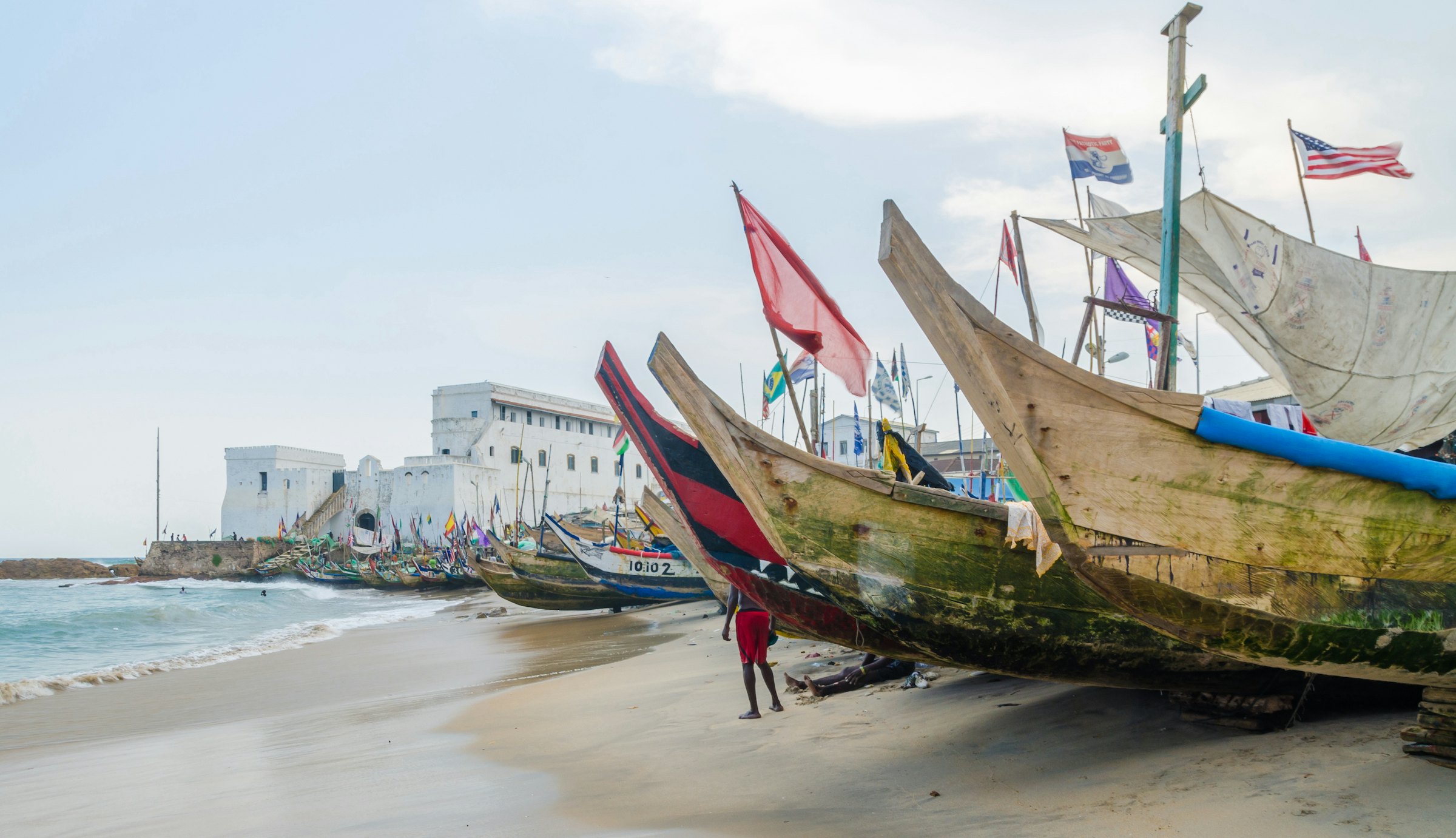
4. Learn about the horrific history of castles of enslaved persons on Cape Coast
The history of Ghana’s castles of enslaved persons is appalling. It's one of the starkest and most vivid reminders you’ll encounter of many atrocities of the transatlantic trade of enslaved people. About 40 of these commercial fortresses once spanned West Africa’s Gold Coast during the 17th and 18th centuries, when they served as a point of no return for the many men and women shipped off in bondage into the trade of enslaved people. Remnants of some of these forts still exist, and two of the most accessible, Elmina Castle and Cape Coast Castle, are located in southern Ghana’s Central Region near the city of Cape Coast.
Planning tip: Cape Coast is about a three-hour drive southwest of Accra, and each of these former European trading posts offers guided tours. Visitors can experience firsthand the desolate isolation cells, dungeons for women and dark, dank holding cells where hundreds of men sweated, starved and defecated together before being forced out through a narrow door to sea.
5. Admire West Africa’s oldest mosque in Larabanga
Larabanga Mosque is not only West Africa’s oldest mosque but also one unique in appearance. Built in the Sudanese style, this white packed-earth structure features pyramidal towers and horizontal timbers jutting out from its sides. First established in 1421, it’s been rebuilt several times over the years and is a popular place for pilgrimage. In fact, many consider it to be the Mecca of West Africa.
The mosque is located in the all-Muslim village of Larabanga, in the country’s North Region. A local guide offers tours of the exterior for a small donation. Down Larabanga’s main road sits the Mystic Stone, an “unmovable” stone that's sacred to local Muslims and at which people of all religions can come and pray.
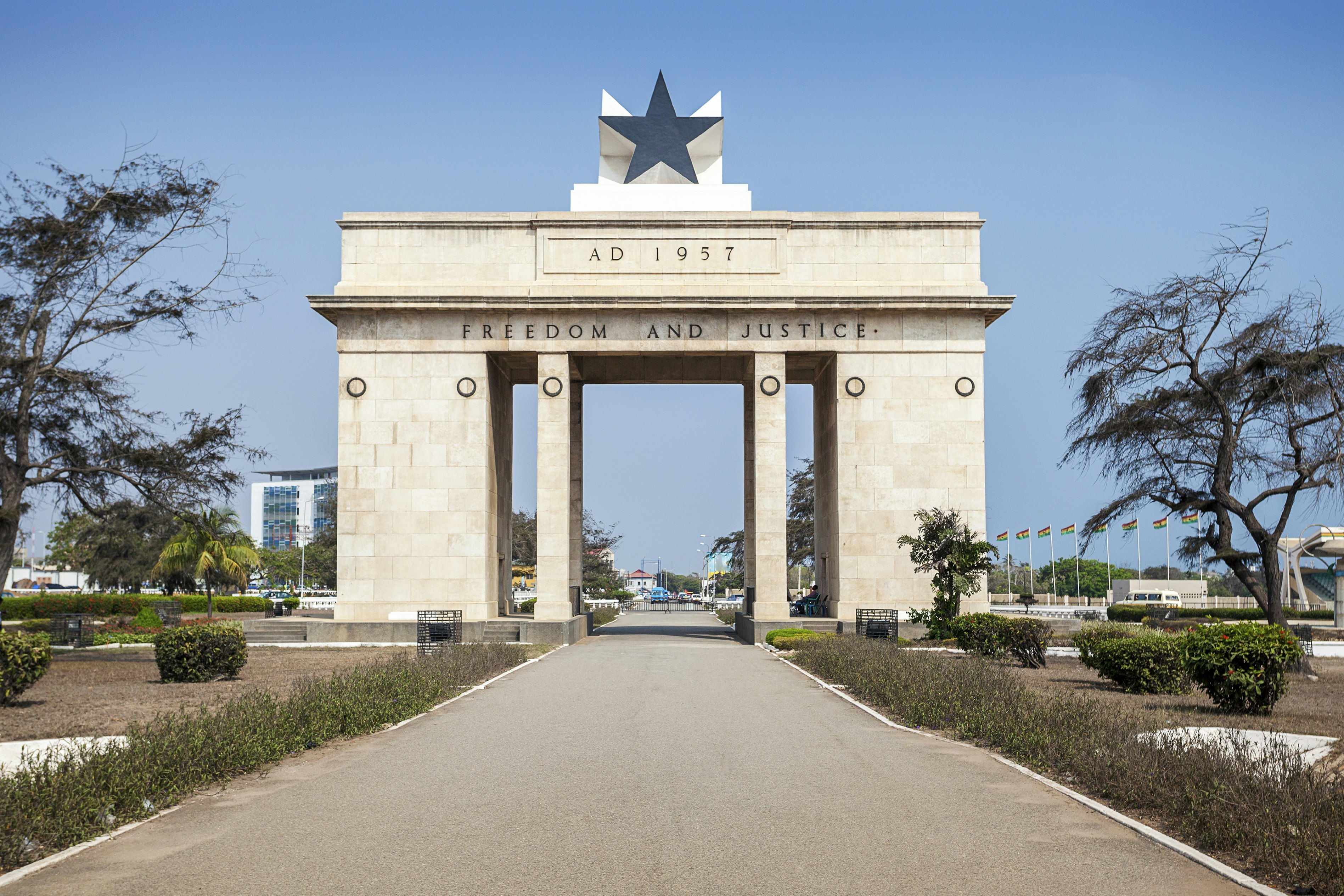
6. Delve into Ghana’s history in Accra
In 1957, Ghana became the first African country to gain independence from colonial rule. Much of the fight for independence took place in Accra, and monuments to this compelling history exist throughout the city. These sites properly salute the importance of Ghana’s transformation into a republic, and what this newfound freedom meant for the continent as a whole.
Each year on March 6, Ghana’s Independence Day, a parade takes place in Black Star Square, Accra’s civic hub. This is where you’ll find the Independence Arch, a towering structure representing Ghana's struggle for independence from imperial British rule; Kwame Nkrumah, the country’s first president, commissioned the arch in 1961, just in time for a visit from Queen Elizabeth II. The square’s imposing Black Star Gate is topped by the Black Star of Africa, the five-pointed star that represents Ghana and also features on its flag. While the interior of the arch isn’t open to the public, guards sometimes will take visitors to the top of the gate for a small fee.
Just down the road is the stunning Kwame Nkrumah Park and Mausoleum, a striking monument that’s the burial place of the former president and his wife Fathia. The structure is clad in Italian marble and shaped like an inverted sword, a symbol of peace among Ghana’s Akan people. Tours of this park and Black Star Square are typically offered alongside visits to W.E.B. Du Bois Memorial Centre for Pan-African Culture, which includes the onetime home and office of the famous American civil-rights activist, seen by many as the father of Pan-Africanism.
7. Hike or bike in Ghana’s Shai Hills
With its lush greenery, scenic unspoiled vistas and rocky mounds for climbing, the Shai Hills Resource Reserve provides an excellent opportunity to explore Ghana’s natural offerings. This 51-sq-km (32-sq-mile) area of forested plains and peaks is known for its roadside baboons, and is a haven for hikers, campers and mountain bikers. You can check out a trio of bat-filled caves, considered sacred by Ghana’s Shai people (remnants of former Shai communities exist in various spots around the reserve), and see a bevy of even larger wildlife, including kob antelope, green monkeys and zebras.
Planning tip: Local sport and recreation outfitter Braveheart Expeditions runs mountain-bike excursions and rock-climbing adventures around the reserve.
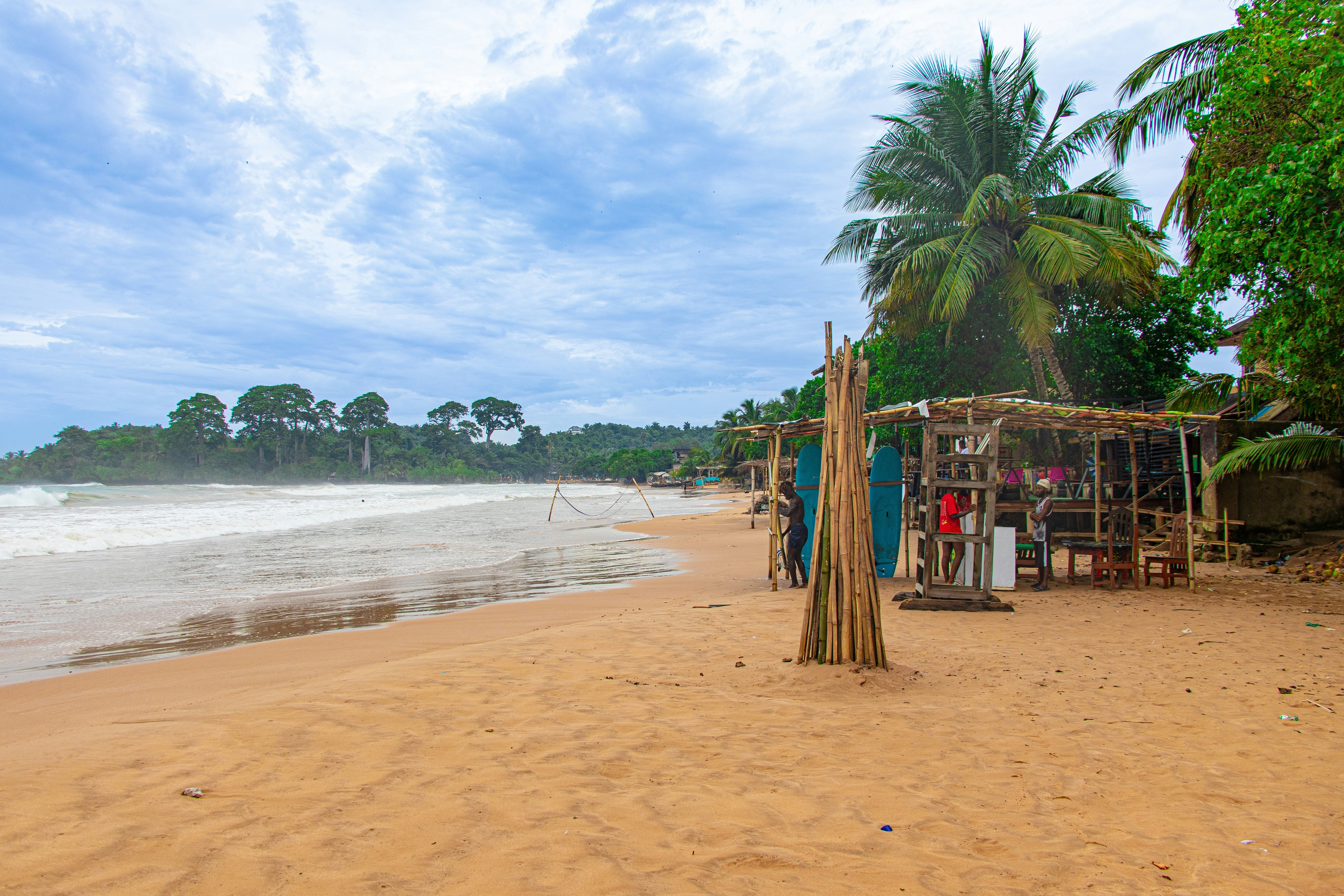
8. Hit up Ghana’s dreamy beaches
With 550km (341 miles) of low-lying, sandy coastline lapped by warm waters, Ghana is a beach lover’s delight. Whether you prefer relaxing on the white sands of Cape Three Points Beach at the country’s southernmost point or partying late into the evening on Kokrobite Beach on the shores of Ghana’s Central Region, every type of beachgoer will find their ideal stretch of sand in the country. Accra’s Labadi Beach is easily accessible from the capital city, while Busua Beach in the country’s Western Region boasts waters for surfers of all levels. If you want to learn, a few surfing schools like Justice’s Brothers offer lessons.
9. Shop for locally made artisan goods
From Djembe drums to beaded dolls, Ghana offers an endless array of authentic handmade artisan goods – but you have to know where to look. Be prepared to haggle at Accra’s Centre for National Culture, home to hundreds of artisan stalls with wares ranging from carved wooden bowls and leather bags to colorful kente textiles. Be sure to seek out stalls where the seller is also the maker, and ask shopkeepers about their process: they’re usually more than happy to tell visitors what’s involved with each piece. Buying from the creator goes a long way toward assuring the artisan piece you’re purchasing is the real deal.
Ghana’s northern region is home to Hamamat, a mud-hut village where women make raw shea butter, a natural skin moisturizer, from the produce of the area’s many shea trees. In an on-site spa, you can try out the products, or you can just tour the village and shop for bars of shea butter soap and colorful handwoven Bolga baskets, another local specialty.
Planning tip: For handmade clay pottery, don’t miss the northern region’s Kukuo Pottery Village, located in the suburbs of Tamale.

10. Embark on a breathtaking canopy walk at Kakum National Park
Not only is 375-sq-km (145-sq-mile) Kakum National Park packed with such wildlife as red river hogs, forest elephants and leopards: it also offers the chance to take a high-flying stroll among the lush rainforest canopy. Kakum’s 350m-long (1148ft) canopy walk is a series of seven rope-like suspension bridges that tower above the ground, up to a height of 40m (130ft). The attraction offers an entirely different vantage point of the forest, and it’s the only one of its kind in Ghana.
Planning tip: A guide is required for both the canopy walk and exploring the dense grounds below; the experience can be booked at the visitor center upon arrival in the park.
11. Attend one of Ghana’s many festivals
Ghana hosts more than 200 festivals annually, many of them colorful lineups of parades, dancing and music that celebrate the country’s rich and vibrant culture. One recurring event to keep an eye out for year round is the Asante Akwasidae festival held in Kumasi, which takes place every six weeks on a Sunday to honor the traditional Ashanti people, their ancestors and their chiefs.
Planning tip: As you consider the best time of year for your visit to Ghana, note that harvest festivals occur across the country from September to November. The holidays are in full swing in December, as well as festivals like Afrofuture, a celebration of African music, fashion, art and culture. The biannual Panafest brings together Africans from around the world, using art as a means of communicating and fostering unity.







